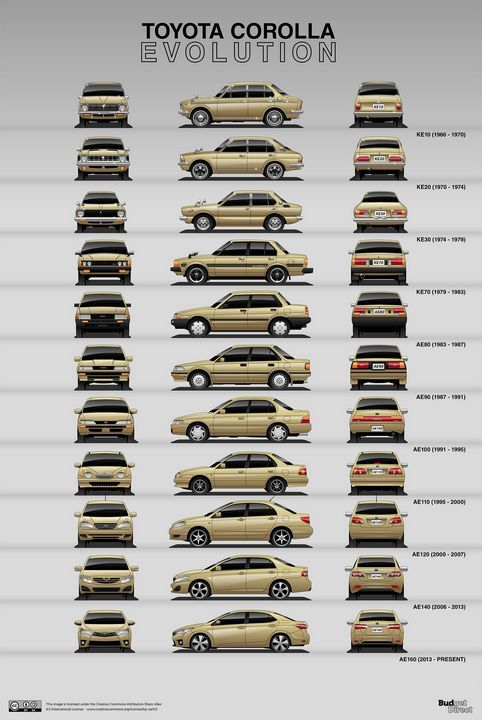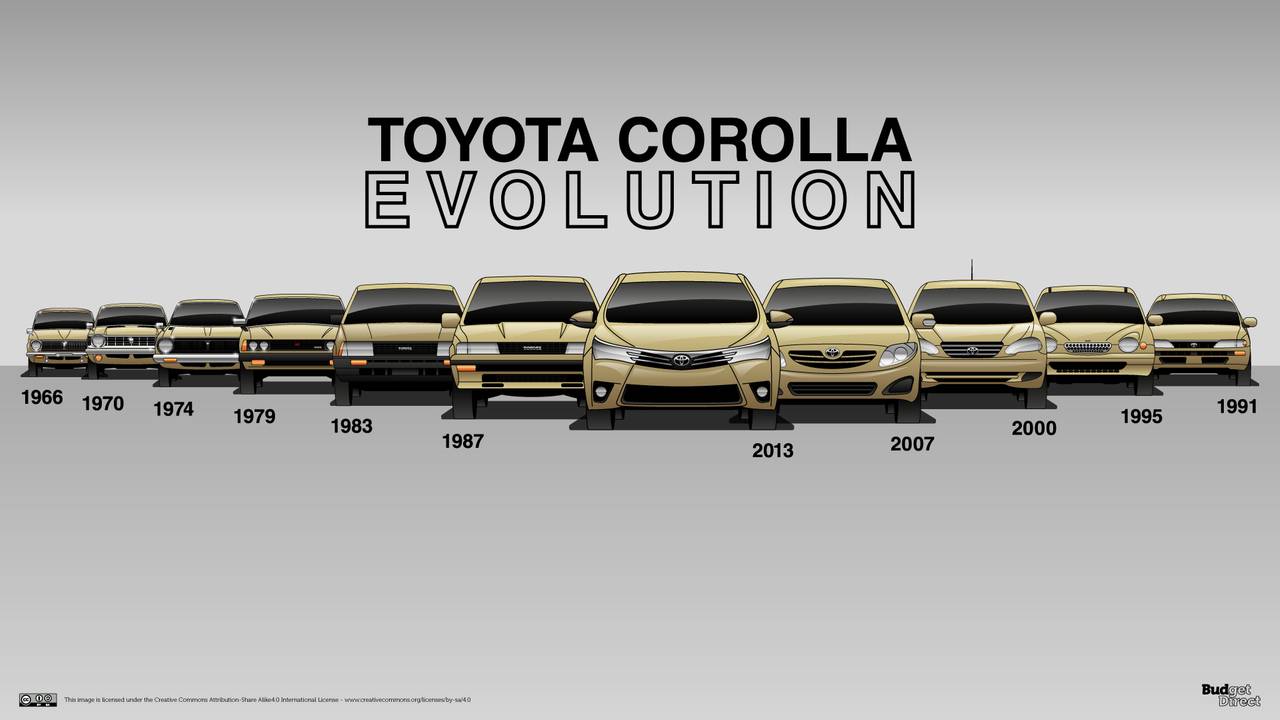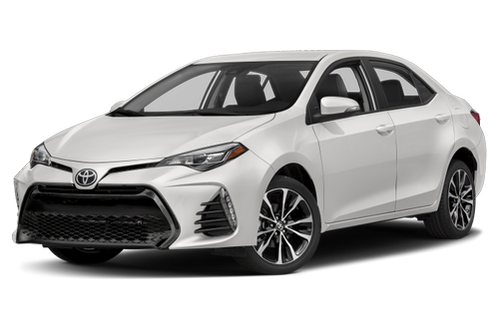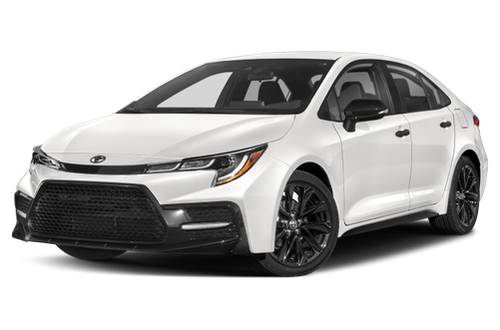

Did you know that Corolla is the world’s best-selling vehicle nameplate? Produced since 1966 and across 12 generations, more than 45 million Corolla models have been sold throughout the world to date.
As you might expect of such a worldwide phenomenon, the history of the Corolla family is as expansive as its sales figures. So we have compiled individual, comprehensively researched chapters that detail the development, general specifications and public reception of each generation. Click on the bold subheadings to be taken to each chapter.
1st generation: 1966-1970

Meet the first-generation Toyota Corolla, a people’s car that stunned the world with its new technology, innovative features and uncommon desirability.
2nd generation: 1970-1974

Take a closer look at the second-generation Corolla, which offered greater competence and enhanced performance for the world’s new high speed era.
3rd generation: 1974-1979

The third-generation Toyota Corolla was developed to meet tightening emissions regulations and in doing so brought many innovations to the entire car industry.
4th generation: 1979-1983

The fourth-generation Corolla continued Toyota’s tradition of appealing to the masses by redefining class benchmarks and setting new production records.
5th generation: 1983-1987

The fifth-generation Corolla was the most comprehensive and revolutionary new model in its history, ushering in front-wheel drive and widespread use of computer technology.
6th generation: 1987-1991

Now fully converted to front-wheel drive, the sixth-generation Toyota Corolla continued its worldwide success with a focus on luxury, quality and usability that stirred the senses.
7th generation: 1992-1997

Making the world’s best-seller even better: the seventh-generation Toyota Corolla of the mid-Nineties was bigger, faster and safer than ever before.
8th generation: 1997-2001

The eighth-generation Corolla arrived with body styling specifically tailored for European tastes and desirability on both rational and emotional levels.
9th generation: 2000-2006

We reveal how Toyota went back to the drawing board to develop the ninth-generation Corolla, meeting the requirements of car-buyers in the New Millennium.
Corolla: The lost years?

Within Europe, the following two generations of Corolla were known by another name, Auris, as this new nameplate was felt to be more closely aligned with the existing Yaris and Avensis model lines.
The first-generation Auris (tenth generation Corolla) was produced from 2007 to 2012 and was notable for introducing Europe’s first full production hybrid model, while the second-generation Auris (eleventh generation Corolla) was produced from 2013 to 2018 and re-introduced an estate version to Toyota’s C-segment line.

12th generation: 2019-onwards

The 2019 model reinstates Corolla to Europe with a dynamic appearance and chassis made possible by its high-tech TNGA platform. Three model derivations will be available – Hatchback, Touring Sports and Saloon – plus the landmark introduction of a dual hybrid strategy, which adds a new and more powerful 2.0-litre self-charging hybrid electric powertrain to the range.
2019 Corolla
Redesigned in 2014
The 2014 redesign improved aerodynamics, with a stiffened body that used more high-strength steel. A continuously variable automatic transmission was introduced. A new LE Eco version with a more elaborate variable valve timing system offered more power and better fuel economy. More rigid suspension pieces improved handling. Other than special editions, not much changed until 2017’s sportier grille and LED headlights, along with a standard backup camera and upgraded fabrics.
2020–2021 Corolla
Redesigned in 2020
The 2020 redesign puts the Corolla on a new platform shared with the compact sedan’s hatchback sibling. Power comes from a standard 139-horsepower, 1.8-liter four-cylinder engine that works with a continuously variable automatic transmission. A more-powerful 2.0-liter four-cylinder is also available. All Corolla trim levels have an independent rear suspension for better handling, and Toyota’s Safety Sense 2.0 suite of safety and driver-assistance features is standard.








